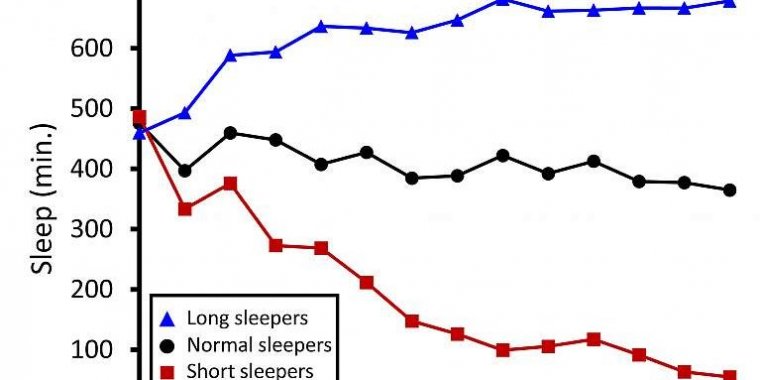| Health / Health News |
Researchers explore complex genetic network behind sleep duration
Scientists have identified differences in a group of genes they say might help explain why some people need a lot more sleep — and others less — than most. The study, conducted using fruit fly populations bred to model natural variations in human sleep patterns, provides new clues to how genes for sleep duration are linked to a wide variety of biological processes.

Graph showing sleep duration (in minutes) of wild fruit flies—long sleepers, normal sleepers, and short sleepers—artificially bred across 13 generations. Image credit: Susan Harbison/NHLBI
Researchers say a better understanding of these processes could lead to new ways to treat sleep disorders such as insomnia and narcolepsy.
Scientists have known for some time that, in addition to our biological clocks, genes play a key role in sleep and that sleep patterns can vary widely. But the exact genes controlling the duration of sleep and the biological processes that are linked to these genes have remained unclear.
To learn more, scientists artificially bred 13 generations of wild fruit flies to produce flies that were either long sleepers (sleeping 18 hours each day) or short sleepers (sleeping three hours each day).
The scientists then compared genetic data between the long and short sleepers and identified 126 differences among 80 genes that appear to be associated with sleep duration.
They found that these genetic differences were tied to several important developmental and cell signaling pathways. Some of the genes identified have known functions in brain development, as well as roles in learning and memory.
The researchers also found that the lifespan of the naturally long and short sleepers did not differ significantly from the flies with normal sleeping patterns.
This suggests that there are few physiological consequences—whether ill effects or benefits — of being an extreme long or short sleeper. (National Institutes of Health)
YOU MAY ALSO LIKE





